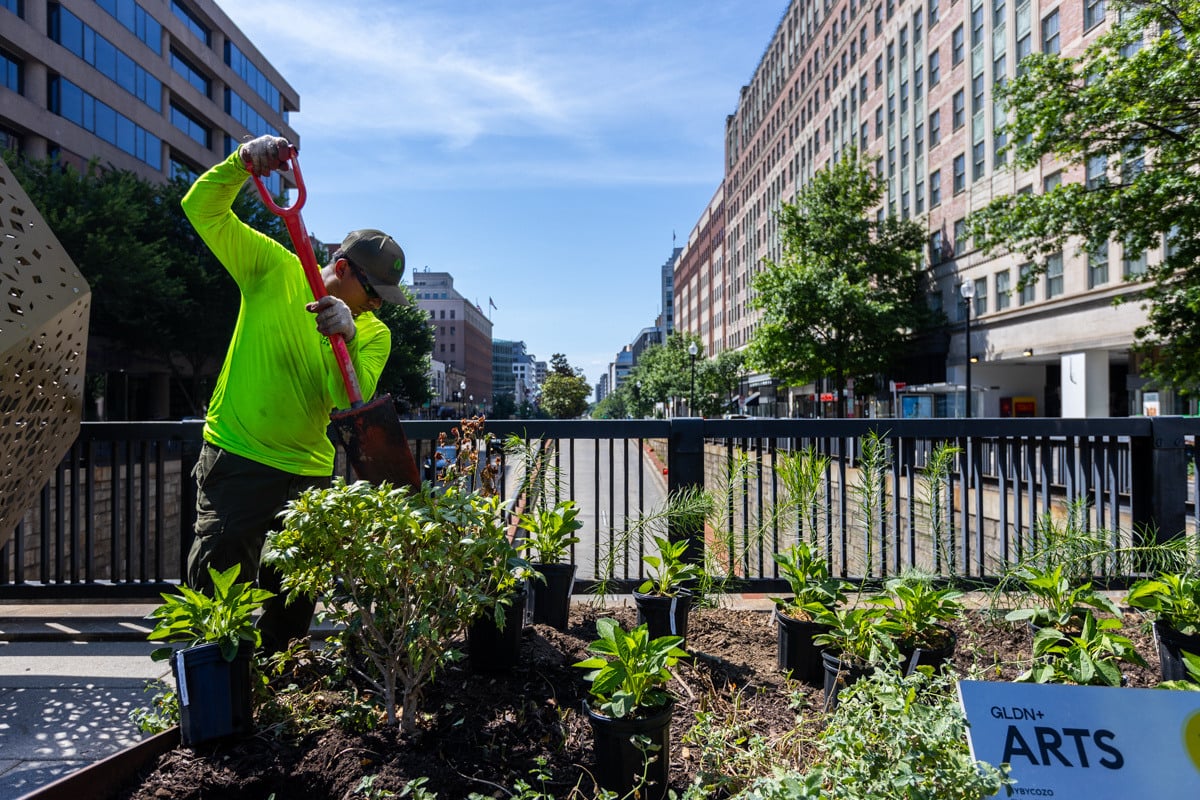
The Ultimate Tree Planting Guide for Commercial Properties
Every great landscape needs trees.
Well-maintained trees make your commercial property more inviting, welcoming and peaceful. Everybody loves trees.
Choose the right combination of trees and you’ll get stunning flowers in the spring, leafy shade in summer, vibrant fall color and intriguing winter interest.
What should you consider when it comes to commercial tree installation? Choose a tree whose needs match your site. Don’t plant trees too close to buildings or to each other. Be aware of maintenance needs, including regular pruning.

Let’s learn more about how to plant trees on commercial properties, including:
Commercial Tree Planting: Why Your Property Needs Trees
Tree Planting Guide: You Can’t Go Wrong with These Favorites
Proper Tree Planting: Keep These Tips in Mind
How to Plant Trees on Commercial Properties: Allow Space for Growth
Know a Tree’s Needs
Commercial Tree Installation Includes Maintenance Needs
The Importance of Pruning — How to Plan and Budget
Commercial Tree Planting: Why Your Property Needs Trees
Trees provide shade for your customers, visitors and tenants, and make a big impact on your curb appeal, but they’re out there making a big difference in other ways, too.
- Trees clean the air. They absorb pollutants from the air, improving air quality.
- Trees filter rainwater and help prevent runoff, improving water quality in nearby waterways.
- They reduce energy costs by offering shade in the summer and blocking wind in the winter.
- Trees absorb noise from nearby traffic and other noisy sources.

Tree Planting Guide: You Can’t Go Wrong with These Favorites
It’s important to choose the right trees for commercial properties. They can’t be too big for the space, or you could end up with root problems. You don’t want them dropping a bunch of messy debris. Maybe you want great curb appeal, or you prefer a tree that’s low maintenance.
Check out a few tried-and-true favorites from the Level Green team. You can’t go wrong with these trees:
Serviceberry
This native tree, also called shadbush or juneberry, offers impressive four-season interest, with beautiful white blossoms in the spring, fruits in the summer, colorful foliage in the fall, and attractive bark color in the winter.
/Flowers%20and%20Plant%20Close%20Ups/Serviceberry.jpg?width=1280&height=853&name=Serviceberry.jpg)
Eastern Redbud
The redbud’s delicate blossoms and buds are one of the season’s most dramatic displays.
This easy-care native has great early spring color, wonderful heart shaped leaves, and good fall color, making it a top choice for commercial tree installation.

Bald Cypress
This native large evergreen tree is legendary in the Deep South, known for its moss-draped crown. It can grow 100-150 feet tall and three to six or more feet in diameter, living up to 600 years.
Red Maple
Red maple is a commercial landscape favorite. It’s one of the first trees to bloom in the spring, is a moderate grower, and has good fall color.

Magnolia Grandiflora
This evergreen will knock your socks off every spring with those huge, spectacular, intoxicatingly fragrant white blossoms.
After the flowers fade, there’s another cool show: big cone-like clusters of rose-red seeds.
Choose the ‘Little Gem’ variety for smaller spaces and cityscapes.

Japanese Cedar
A super sturdy tree for the commercial landscape, it sports pretty blue-green foliage and interesting texture. ‘Globosa Nana’ is a great dwarf choice for if your commercial tree planting involves smaller spots.

Eastern Red Cedar
You’ve seen Eastern red cedar everywhere, from front yards to roadsides to
plenty of commercial properties, and for good reason. This native evergreen tree tolerates heat, wind, salt, a wide range of soils and other not-so-great conditions, making it one of the best choices for commercial tree installation.

‘Dragon Lady’ Holly
Unlike some other holly trees that get wide and need a lot of trimming, ‘Dragon Lady’ grows as high as 20 feet tall, but only four or five feet wide, meaning it fits into spots where other hollies won’t. And it doesn’t need trimming —a bonus for commercial tree planting. Its spiny leaves deter wildlife and trespassers, if you need those qualities.

Proper Tree Planting: Keep These Tips in Mind
Tree-planting basics seem simple enough: choose a tree, dig a hole, plant the tree, keep it watered.
But there’s more to it than that:
How to Plant Trees on Commercial Properties: Allow Space for Growth
Consider a tree’s size at maturity, not its size at planting time. Plant with future growth in mind and enough space around them. If you plant trees too close together or too close to buildings or structures, you’ll have to remove them just when they’re looking great — which is a waste of trees and money.
Roots are a factor here, too. Tree roots extend much further than you think. They can grow up to three times the width of the tree’s crown, potentially causing issues with your sidewalks, parking lots, underground plumbing, and even building foundations.

Know a Tree’s Needs
Be sure the tree you choose is right for the space. How tall will it get? How wide? Does it prefer sun or part shade? What about soil requirements? Will it drop messy fruit on your sidewalk? If you’re hoping for spectacular fall color, will your tree have it?
Do some research before you dive in to commercial tree planting — or partner with an experienced local landscaping company with pros on board who can help you choose.
Commercial Tree Installation Includes Maintenance Needs
Your trees are probably the biggest landscape investment you have. And they need occasional maintenance to stay healthy and thriving — and to keep your property safe. 
Trees have the same key needs as all plants —water, fertilizer, mulch to retain soil moisture, and occasional pruning for health and appearance. (More on this in a minute.)
Some trees, like American holly and Eastern red cedar, need little to no maintenance, as they’re perfectly acclimated to this area.
Others, like magnolia, need burlap for winter protection if they’re planted in areas exposed to winter chill.
A few pesky pests can cause problems for trees, damaging their leaves, bark or needles, including aphids, spider mites, whiteflies, and scale, so integrated pest control is important follow-up to commercial tree planting.
The Importance of Pruning — How to Plan and Budget
Almost all trees need pruning. Pruning a tree throughout its lifetime will maintain its nice shape and health — and keep it from becoming a costly danger on your property.
Dead or dying branches can tumble, causing significant damage, as well as liability concerns if they harm people or property. Routine commercial tree pruning takes those dangerous branches out before they fall.
But if you have a multitude of trees on your commercial property, pruning them all can get costly. So Level Green account managers work with customers to create a cost-effective tree maintenance plan and budget -- a long-term plan for pruning each tree at regular intervals to make it more affordable.

Leave The Commercial Tree Planting To Level Green
Here at Level Green, we love planting trees. And we know exactly how to do it to ensure many years of health and happiness for you and your new addition.
If you’re not already a Level Green Landscaping client, we’d love to add you to our growing list of happy customers. Our focus is on commercial landscaping in Washington DC, Maryland, and Virginia serving properties like offices, mixed-use sites, HOAs, municipalities and institutions.
Contact us at 202-544-0968. You can also request a free consultation online to meet with us one-on-one.
We’d love to hear from you.

Douglass Delano
Doug Delano (and Bill Hardy) opened Level Green Landscaping LLC in 2002 to offer Washington DC, Maryland and Virginia reliable commercial landscape maintenance services.

